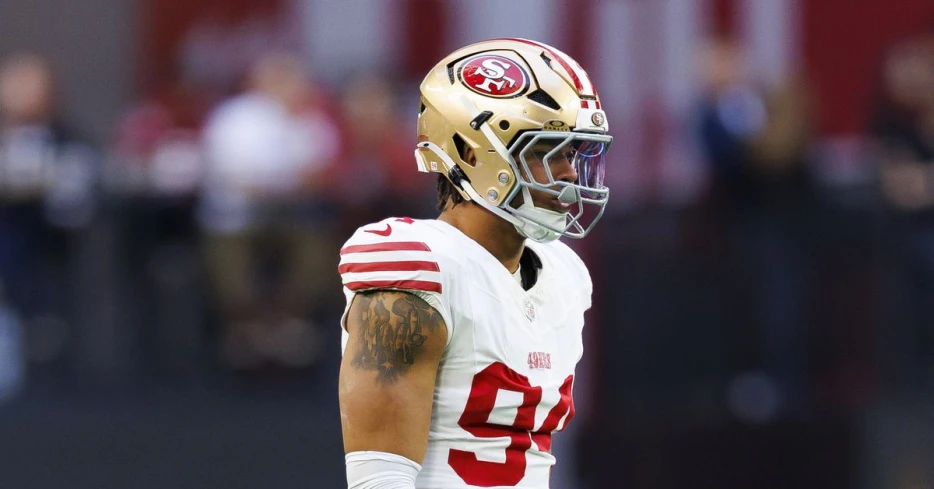
 Niners Nation
Niners Nation
Yetur Gross-Matos was recently listed as a cap casualty for the 49ers this offseason. Today, we discuss how much the Niners would save and why they’d move on from Gross-Matos.
The San Francisco 49ers pass rush took a significant step back in 2024. Part of that was their inability to adjust and the lack of creativity on passing downs. In years past, we saw DeMeco Ryans line up the best pass rushers next to each other, move Nick Bosa around, and find matchups that were advantageous to the Niners.
It was a lot to put on Nick Sorensen’s plate in Year 1, but he was coaching with one arm behind his back for most of the season. The defensive coaching staff has generally relied on rushing four and playing coverage. The Niners lost their identity once Javon Hargrave went down in Week 3.
According to Next Gen Stats, the 49ers finished the 2024 regular season with the third-lowest blitz rate against the pass and 19th-lowest pressure rate. For a team with a below-average pass rush, the Niners were quite good at defending the pass. However, if the goal is to upgrade the defensive line, it might make more sense to move forward with players who will be available.
The 49ers didn’t feel like Hargrave’s availability was worth the price of his contract, which is why they plan on releasing him. Maliek Collins is under contract for one more season before his deal voids in 2026, making defensive tackle a priority.
From Arden Key to Charles Omenihu, the 49ers have used an edge rusher at defensive tackle on obvious passing downs when they’ve played to their peak. It’s helped unlock the pass rush and made players like Bosa more dangerous.
This past season, that was supposed to be Yetur Gross-Matos. Injuries kept Gross-Matos out for six games in 2024. He missed Weeks 5, a game where the 49ers could have used an additional pass rusher, through 10, as well as the first game of the season.
The question the front office must ask is whether they saw enough from Gross-Matos to keep him around for another year when he has a cap number of $9.4 million.
Three of Gross-Matos’s four sacks came in one game. According to Sports Info Solutions, only Weeks 11 and 14 were games in which Gross-Matos was a net positive. Per Next Gen Stats, Gross-Matos had three games where he had the same pressure rate as anybody reading this and was below ten percent in four other games. Then, you see his ceiling. Gross-Matos had three games, the Rams, Bears, and Packers, where he was north of 20 percent in pressure rate.
Finally, we can look at Gross-Matos’s snap count. He never played more than 62 percent of the time, usually hovering between 55-60 percent of the snaps. The reason it makes sense to judge a player by his snaps is because it tells you what the team is asking of a player. In this instance, 59...